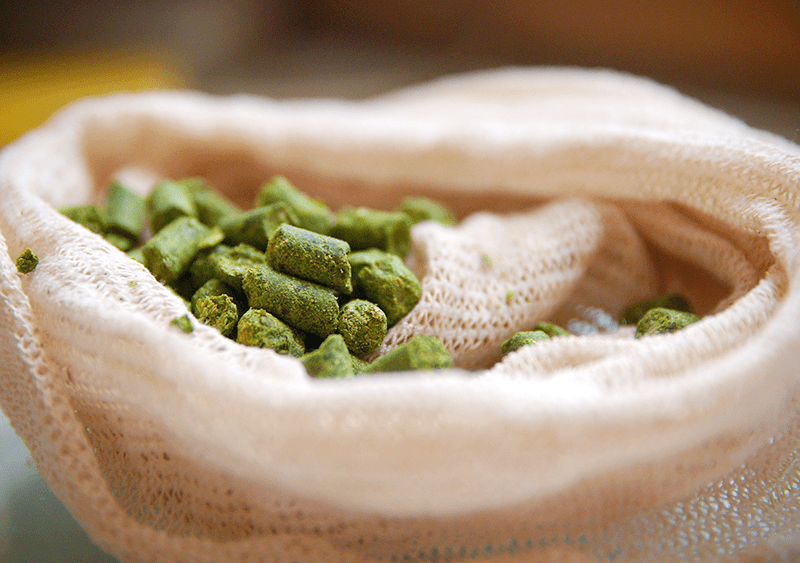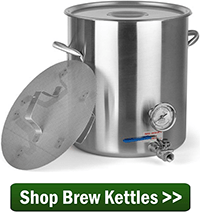 When homebrewers make a five-gallon beer recipe, they expect to end up with a full five gallons of beer. To avoid the frustration of ending up with less beer than you bargained for, check out these five ways you can be sure to end up with your proper allotment of homebrew — to minimize the loss and maximize the beer:
When homebrewers make a five-gallon beer recipe, they expect to end up with a full five gallons of beer. To avoid the frustration of ending up with less beer than you bargained for, check out these five ways you can be sure to end up with your proper allotment of homebrew — to minimize the loss and maximize the beer:
- Pour all the trub from the kettle into the fermenter. Many homebrew books call for creating a whirlpool in the brew kettle during the chill-down phase, making it easier to leave behind the hops and protein material in the kettle. The thing is, depending on your beer recipe and your equipment, you could easily leave a half-gallon or more of wort in the kettle. To maximize the amount of beer you end up with, try pouring everything into the fermenter, where the hops and the protein will eventually settle out. (I highly recommend reading the Great Trub ExBEERiment to see how this might affect your finished beer.) If you still want to keep the trub out of your kettle, try pouring the wort into the kettle through a strainer to minimize your beer losses.
- Top up to 5.25 or 5.5 gallons in the fermenter. Many extract beer recipes call for adding enough water to make five gallons of wort prior to fermentation. But it’s important to remember that the trub in the fermenter can take up as much as half a gallon of wort or more. To account for these losses, add enough clean, chlorine-free water to the fermenter to make a total of between 5.25 and 5.5 gallons of wort. Remember, you are not trying to have more than 5 gallons of liquid, you are trying to make up for the volume the trub is displacing.
- Boil your hops in a straining bag. This can be particularly effective for your hoppier homebrews like IPAs. Instead of pitching the hops directly into the boiling wort, try putting them into a muslin bag This way they can be easily removed from the wort post-boil. This works well for dry-hopping, too.
- Cold crash.
 Dropping the temperature of your fermented beer prior to bottling will help yeast, hops, and other material settle into a compact layer at the bottom of the fermenter, maximizing the amount of beer you get from every batch. When fermentation is completely, drop the temperature to 30-40˚F for a few days or longer. This cold maturation phase also helps improve beer flavor. Bottle condition at room temperature as usual.
Dropping the temperature of your fermented beer prior to bottling will help yeast, hops, and other material settle into a compact layer at the bottom of the fermenter, maximizing the amount of beer you get from every batch. When fermentation is completely, drop the temperature to 30-40˚F for a few days or longer. This cold maturation phase also helps improve beer flavor. Bottle condition at room temperature as usual.
- Use a refractometer. Every time you use a hydrometer to test your beer’s gravity, you lose about a half-pint. With a refractometer, all you need is a couple drops. Please note that a refractometer works best before fermentation. After fermentation begins, you will need a calculator to compensate for the alcohol present in the beer.
What are some ways you maximize your homebrew yields? Do you have any quick tips on how to lose less of your homebrew beer?
—–
David Ackley is a beer writer, brewer, and self-described “craft beer crusader.” He holds a General Certificate in Brewing from the Institute of Brewing and Distilling and is founder and editor of the Local Beer Blog.

I loved the tip about “cold crashing” before bottling. Good tip! Thx